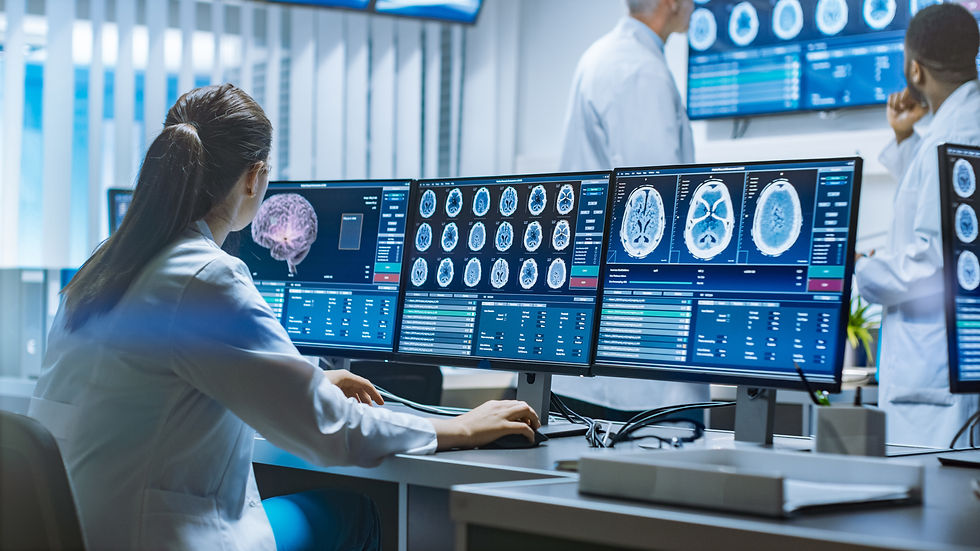Stroke Awareness Month: What you should know
- Nimra
- Jun 3, 2023
- 3 min read
June is Stroke Awareness Month in Canada, which is a great opportunity to raise awareness about the prevalence of stroke, as well the signs and symptoms. The general perception of stroke is that it only happens to people who are elderly - and while it is true that the older you are, the higher your risk of stroke, there is growing awareness of younger people who also have experienced stroke to make others aware that this can happen to anyone.
What is a stroke?
This word is derived from the greek "apoplexia", which is an umbrella term to describe being struck with a deadly blow that caused sudden pain, losing speech, and more. I find it fascinating that this was documented as far back as Hippocrates, over 2000 years ago. Our understanding of strokes has improved a lot in that time, in that this terms describes a loss of blood flow to any part of the brain, which leads to loss of oxygen and cell death.

A stroke can happen in 3 ways:
Hemorrhagic Stroke
When an artery in the brain breaks open. High blood pressure is a leading cause of this.
Transient Ischemic Attack (TIA)
A blood clot that only briefly blocks an artery, but can be a sign that a larger stroke can occur.
Ischemic Stroke
A blockage or blood clot in a blood vessel in the brain
How can I recognize a stroke?
An easy acronym that is used across the word is FAST. This stands for:
Face drooping (Does one side of the face droop or is numb? Ask the person to smile)
Arm weakness (Is one arm weak or numb? Ask the person to raise both arms)
Speech difficulties (Is the speech slurred? Ask the person to repeat a sentence)
Time to call 911
Other symptoms can also include sudden numbness, trouble understanding, sudden severe headache and trouble seeing in one or both eyes.
It is vital to act quickly, because there are certain treatments that can improve recovery if delivered within a short interval (less than 4 hours) of the stroke occurring.
Why do I look for one-sided weakness in stroke?
You may have noticed that many of the symptoms above ask to consider if one arm is harder to move, or if one side of the face is drooping. This is because the right hemisphere of the brain actually controls the left side of the body, and the left hemisphere of the brain controls the right side of the body. Both hemispheres of the brain are not separate, instead they communicate with each other. As it tends to happen for stroke, there will be a localized area that the loss of oxygen occurs, which will cause some difficulty in movement usually on one side of the body.
The survivors
I was recently reading Emilia Clarke's re-telling of the two strokes she experienced, as well as the harrowing ordeal of multiple brain surgeries. Emilia Clarke, famous for her role in Game of Thrones, is truly at the forefront of advocacy for stroke awareness, especially as she had her first stroke in her 20s. She started a charity called SameYou, to provide treatment for people recovering from stroke.
In my own experience, it's difficult to see the personal effect on the individual but also the family's distress in watching a loved one go through this. It can happen even when people have low risk factors. It takes a team to support each patient afterwards - of hard-working doctors, surgeons, nurses, ENTs, Speech-Language Pathologists, Physiotherapists, OTs, and more.
According to the Ontario Stroke Network, in Canada there there are over 50,000 new strokes (that’s one stroke every 10 minutes) and about 300,000 Canadians are living with the effects of stroke. As we go through this month, I will discuss some more of the SLPs role in stroke management as well as recovery for those who experience stroke.

References
About the definition of stroke: https://www.ncbi.nlm.nih.gov/pmc/articles/PMC5298424/#:~:text=The%20word%20%27stroke%27%20is%20related,classically%20referred%20to%20as%20apoplexy.
Facts from the Heart and Stroke Foundation: https://www.heartandstroke.ca/stroke/risk-and-prevention
FAST information: https://www.heart.org/-/media/Stroke-Files/FAST-Resources/ucm_467905.pdf
Read more about left brain/right brain: https://dana.org/article/right-brain-left-brain-really/
Comments